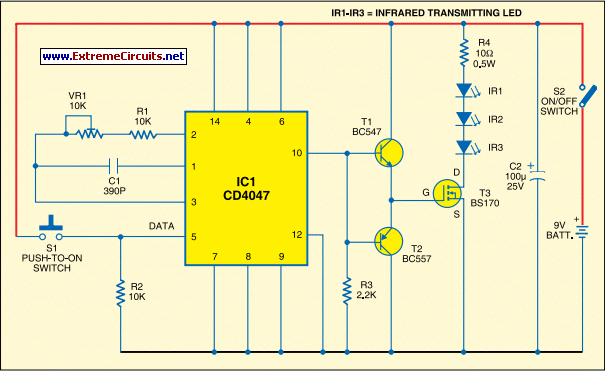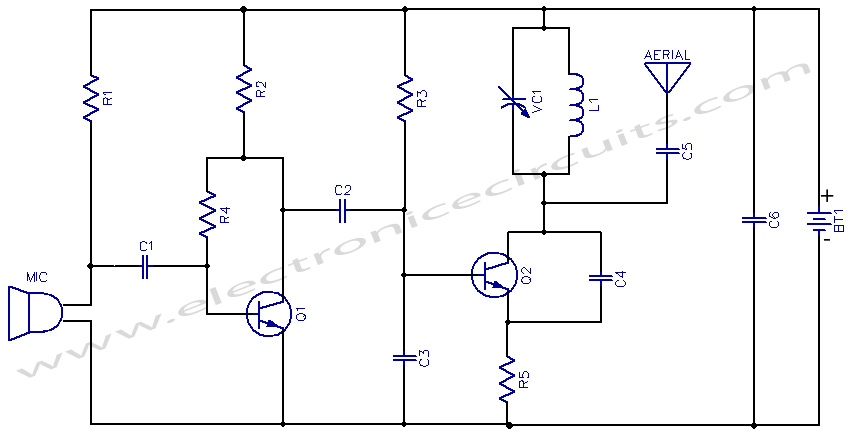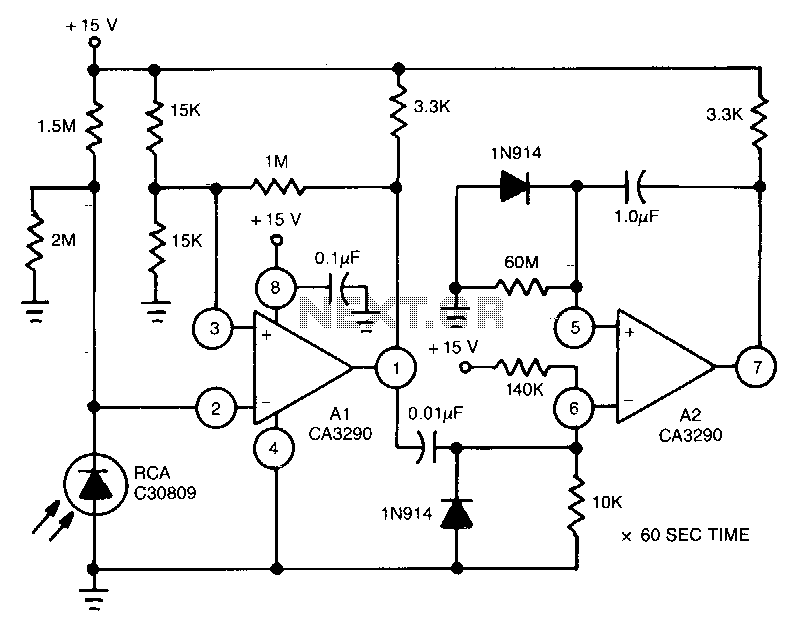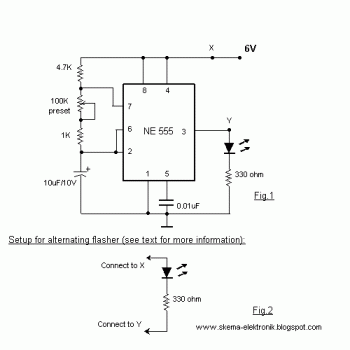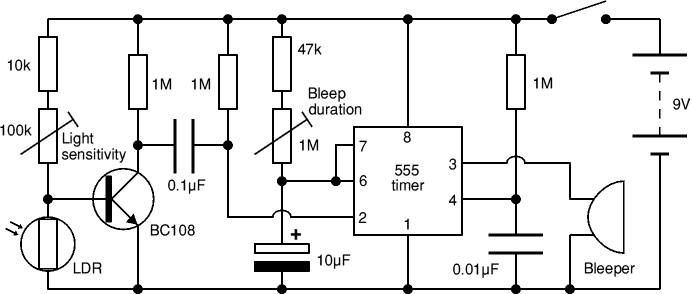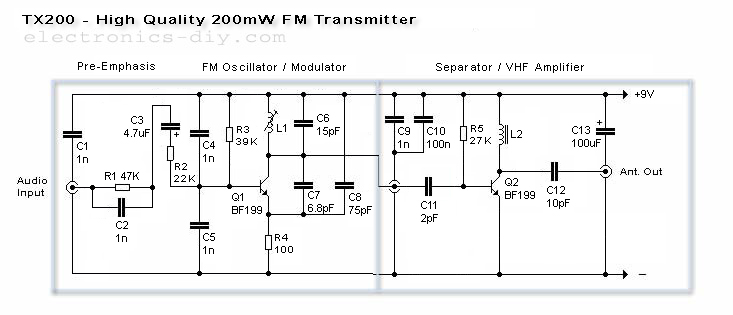
Light Transmitter
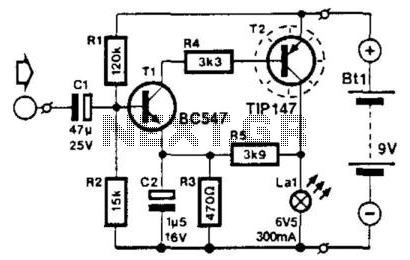
This circuit modulates the current through a lamp filament. It is designed for use with a low-voltage lamp featuring a thin, straight filament, which responds quickly to variations in filament voltage. Direct current (DC) is applied to bias the filament that is on, while audio signals are superimposed. A BC457 transistor drives a TIP147, which modulates the filament current.
The circuit operates by utilizing a low-voltage lamp, typically characterized by its thin, straight filament. Such lamps are advantageous due to their rapid response to changes in applied voltage, making them suitable for applications requiring dynamic modulation. The modulation process begins with the application of a DC bias to the filament, ensuring that it remains illuminated at a base level. This DC bias is essential for maintaining the filament's operational state while allowing for the superimposition of audio signals.
The BC457 transistor functions as a signal amplifier that receives the audio input. This transistor is configured to control the TIP147, a power transistor that handles the higher current required to modulate the lamp filament effectively. When the BC457 receives an audio signal, it alters its conductivity, which in turn adjusts the base current of the TIP147. As a result, the TIP147 modulates the current flowing through the lamp filament in accordance with the audio signal, creating a visual effect that corresponds to the sound input.
In this configuration, it is crucial to ensure that the components are rated appropriately for the current and voltage levels involved. The TIP147, as a power transistor, is capable of handling significant current, making it suitable for driving the lamp filament without overheating. Proper heat sinking may be required to maintain reliable operation under continuous use. Additionally, the circuit should incorporate protective elements such as diodes to prevent back EMF and ensure the longevity of the transistors.
This circuit design can be utilized in various applications, including decorative lighting, sound-activated displays, and other scenarios where visual feedback is desired in response to audio signals. The combination of the BC457 and TIP147 provides a robust solution for achieving effective modulation of filament-based lighting. This circuit modulates the current through a lamp filament. Use a low-voltage lamp with a thin, straight filament. They h ave a fast response to filament voltage variations, dc is applied to "bias" the filament that is on, and the audio is superimposed. A BC457 drives a TIP147, which modulates the filament current. 🔗 External reference
The circuit operates by utilizing a low-voltage lamp, typically characterized by its thin, straight filament. Such lamps are advantageous due to their rapid response to changes in applied voltage, making them suitable for applications requiring dynamic modulation. The modulation process begins with the application of a DC bias to the filament, ensuring that it remains illuminated at a base level. This DC bias is essential for maintaining the filament's operational state while allowing for the superimposition of audio signals.
The BC457 transistor functions as a signal amplifier that receives the audio input. This transistor is configured to control the TIP147, a power transistor that handles the higher current required to modulate the lamp filament effectively. When the BC457 receives an audio signal, it alters its conductivity, which in turn adjusts the base current of the TIP147. As a result, the TIP147 modulates the current flowing through the lamp filament in accordance with the audio signal, creating a visual effect that corresponds to the sound input.
In this configuration, it is crucial to ensure that the components are rated appropriately for the current and voltage levels involved. The TIP147, as a power transistor, is capable of handling significant current, making it suitable for driving the lamp filament without overheating. Proper heat sinking may be required to maintain reliable operation under continuous use. Additionally, the circuit should incorporate protective elements such as diodes to prevent back EMF and ensure the longevity of the transistors.
This circuit design can be utilized in various applications, including decorative lighting, sound-activated displays, and other scenarios where visual feedback is desired in response to audio signals. The combination of the BC457 and TIP147 provides a robust solution for achieving effective modulation of filament-based lighting. This circuit modulates the current through a lamp filament. Use a low-voltage lamp with a thin, straight filament. They h ave a fast response to filament voltage variations, dc is applied to "bias" the filament that is on, and the audio is superimposed. A BC457 drives a TIP147, which modulates the filament current. 🔗 External reference
